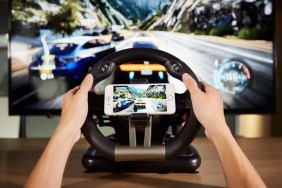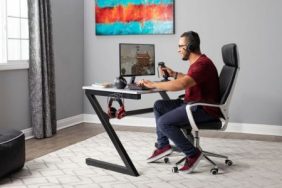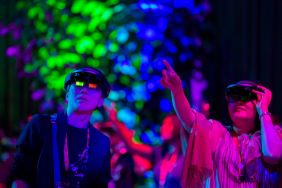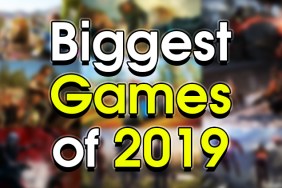Since the dawn of gaming people have wondered what it would be like to immerse themselves in virtual reality. Attempts have been made many times over the years to make that dream real (i.e. Nintendo’s Virtual Boy), but technology hasn’t quite caught up to our creative minds. Or has it?
Following an extremely successful Kickstarter campaign, an ambitious company called Sixense is looking to bridge the gap between reality as we know it and the virtual world using what it calls the STEM System. What it has could be an instrumental step toward merging the worlds of fantasy and fiction with our own.
We had a chance to ask the developers behind the STEM System what it’s all about and what it could mean for gaming as we know it.
CraveOnline: Can you explain what the STEM System is for those who aren’t already familiar?
The STEM System is a wireless, modular motion tracking platform for video games, virtual reality (VR), and more. It enables players to interact naturally and intuitively with games by tracking full position and orientation at all times, whether at the desktop or throughout the entire living room.
This is the next evolution in Sixense motion tracking technology, which has previously powered the Razer Hydra PC gaming controller, the input device of choice for developers of VR applications. Advancements for the STEM System include longer range, wireless operation, modular form factor and better tracking performance at all ranges.
The STEM System will support up to five wireless motion tracking modules, or STEMs, for full position and orientation tracking of the head and hands, the entire body or other configurations. You can also clip or strap a STEM to your body or any device you choose using a STEM Pack.
In order to foster a robust developer community, the STEM System will be an open platform for creators of both software and hardware consumer products. Developers will be able to create games with virtually no imposed restrictions and to embed STEMs for tracking of their own peripherals or wearable devices, such as swords, baseball bats or head-mounted displays. The modularity of the STEM System will give developers the flexibility and autonomy they need to create motion-tracked titles complete with motion-tracked peripherals of their own design.
The second-generation Sixense SDK takes advantage of the STEM System’s extended capabilities and also provides backward compatibility with products and games powered by earlier generations of Sixense motion tracking technology, including the Razer Hydra. The SDK is available for Windows, Mac OS and Linux.
You’ve not only met your Kickstarter goal, but more than doubled it. How does it feel to know that you have thousands of people who support your vision?
Kickstarter gives us an opportunity to directly engage a developer and enthusiast community who can help us build an ecosystem with great content. Almost every key feature decision for the STEM System is based on feedback that we’ve received from these very groups, and we’re always listening. Working together, we can ensure that the STEM System is a product of what the community wants and that great applications will be available as soon as possible.
How has the support been outside of Kickstarter?
We have received great support from the gaming development community, particularly those that are already full bore into developing specifically for VR games. Individual leaders in the community, companies and new startups have all embraced what we’re doing by supporting our Kickstarter project. Two great examples of that are Bossa Studios, the developer behind Surgeon Simulator 2013, and Cloudhead Games, the team behind The Gallery: Six Elements.
What sold you on using a hybrid of physical inputs and motion tracking rather than 100% motion technology (i.e. Kinect)?
The best way to demonstrate the differences between the STEM System and camera based systems is with a video demonstration from our creative director Danny Woodall: https://www.youtube.com/watch?v=jkOLswJlTBs.
All camera systems are subjected to certain limitations. When Danny interacts with objects in this demo he can feel them in his hands with haptic feedback. You cannot feel a weapon or steering wheel in your hands when using camera based technology. You also need to constantly maintain line of sight with the camera that will be invisible to you while you wear your HMD. If you are turning around as Danny does in this video the Kinect could lose tracking of some of your limbs during that process.
We believe in the hybrid approach because we are focused on the user experience, and not purely on VR motion input. That’s one reason why the STEM System is modular, allowing hardware and application developers to create controllers that suit a game genre or application. Our STEM Controllers are a hybrid of motion tracking and traditional buttons/joysticks/triggers/bumpers to give developers the maximum flexibility in creating games, and give users a familiar yet enhanced experience.
<< On the next page we talk about software support, Oculus Rift, and more! >>









